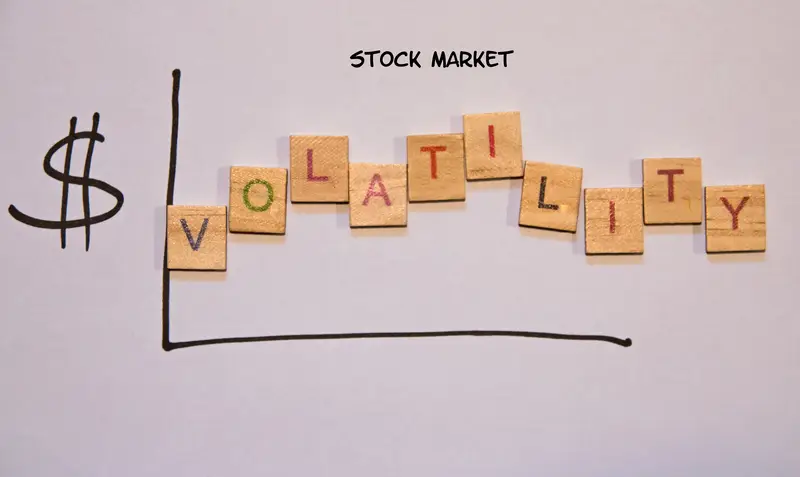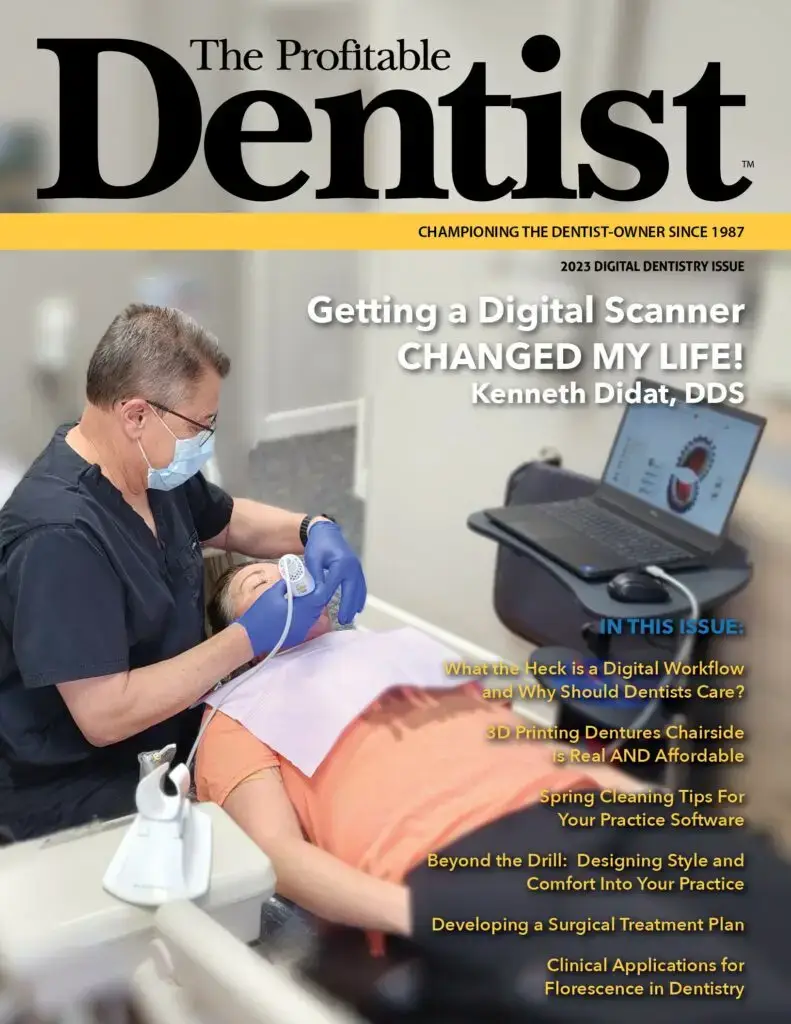Are you freaking out? I know I am. I can’t remember a time when the stock market felt this volatile, and not in a good way. It’s like watching a rollercoaster you never agreed to ride. Every dip, drop, and downturn feels like a gut punch, especially when you know it’s a direct result of decisions made far beyond our control. Unfortunately, changes implemented at the government level often ripple into our retirement accounts, our daily practices, and our sense of peace of mind.
It’s hard to stay focused on dentistry when your financial future feels like it’s being shuffled like a deck of cards in Vegas. That uncertainty doesn’t just live in investment accounts — it seeps into your dental practice. It manifests in quieter ways: lingering in break rooms, during morning huddles, and weighing on the emotional well-being of your team. Concerns about retirement savings, especially 401(k) plans, can leave even your most confident team members feeling anxious and powerless. The money they’ve worked so hard to set aside suddenly feels fragile, and with it, their sense of security.
I remember navigating the market downturns following 9/11 and again during the 2008 financial crisis. I was much younger then, but I vividly recall the anxiety I felt over the possibility of losing my investments. I often looked at my dentist-owners for reassurance. While they couldn’t provide specific financial advice, their calm reminders that the market tends to rebound over time were comforting and helped ease my fears.
Fast forward to today, and not much has changed in terms of how financial stress shows up in the workplace. According to a 2023 PwC Employee Financial Wellness Survey, 57% of employees say finances are the top cause of stress in their lives, and nearly one in three admit that financial worries have negatively impacted their productivity at work. So even if no one is saying it aloud, trust me, the fear is real, and it’s sitting right beside you in your practice. 1
As the dentist-owner or trustee of your practice’s retirement plan, you are in a uniquely trusted position. You’re not just their employer; you’re a steward of part of their long-term security. In moments like we are seeing today, leadership extends beyond procedures and productivity, it becomes about presence and connection to your team. It’s important that you reassure your team that your commitment to their financial well-being extends beyond the difficulties of the stock market. After all, you all are in this together.
If you provide employer contributions, such as matching funds or profit-sharing, remind them that this plays a significant role in building their retirement savings, providing stability regardless of market fluctuations. For instance, in a traditional 401(k) plan, employers can choose to match a portion of the employee’s contributions or make nonelective contributions to all eligible employees. 2
It’s also important to remind your team that your commitment to their future goes far beyond the daily difficulties of the market. Employer contributions — whether through matching, non-elective contributions, or profit-sharing continue to build their retirement savings, providing a layer of stability and reassurance during uncertain financial times. These contributions don’t pause just because the market takes a dip. They’re often the steady thread that helps keep long-term financial goals on course when everything else feels shaky. It’s easy for employees to forget this — I know I did.
According to the U.S. Department of Labor, employer-sponsored retirement plans can include valuable features like dollar-for-dollar matching up to a certain percentage or fixed contributions, regardless of employee deferrals. These contributions are a tangible expression of your investment in your team’s future, and they matter more than ever during periods of market instability. 3
More recent data from the Transamerica Center for Retirement Studies underscores the importance of retirement plans with employer contributions in enhancing job satisfaction and financial confidence. According to their 23rd Annual Retirement Survey, 91% of workers value a 401(k) or similar plan as an important benefit, and 82% indicate that retirement benefits offered by a prospective employer will be a major factor in their decision-making when job hunting. Additionally, among employers offering retirement benefits, 55% cite helping employees save and prepare for retirement, and 52% cite increasing job satisfaction among employees as key reasons for providing these plans. 4
Some employees may be checking their retirement accounts daily, while others take a “set it and forget it” approach. Depending on the plan, participants may have online access to track performance in real time, while others receive quarterly statements. As a result, many employees aren’t fully aware of how market fluctuations are impacting their portfolios until their next update arrives.
Without proactive communication during that gap, worry can build in the background, leading to unnecessary stress or reactive decisions. It’s crucial to convey that the plan is under constant professional oversight. By partnering with a trusted financial advisor and maintaining fiduciary responsibility, you help ensure that the investment options are regularly reviewed, diversified, and aligned with best practices. 5 This diligence reinforces that the plan is managed with their best interests at heart, especially during these times.
Acknowledging their concerns doesn’t require all the answers—it simply requires intention. A comment like, “I know the market’s been rocky lately, and some of you might be feeling nervous about your 401(k). Let’s talk about it,” can do wonders. This simple gesture helps normalize their fears and creates space for honest conversation. In doing so, you’re not only easing anxiety but also building a culture of trust and transparency. By showing that you care about their futures and fears, you reinforce your commitment to their well-being far beyond the walls of your practice.
It’s important to remind your team that retirement investment is a long-term strategy. While some may be nearing retirement, most have many years, or even decades, of investing ahead. The market downturn can feel unsettling in the moment, but history consistently shows that markets recover over time. 6
That said, those closer to retirement may not have the same time horizon, so their strategy may need to look a bit different. Every participant must weigh the pros and cons and make the decision they feel is best for their unique situation. And for some, that may mean opting out of the retirement plan altogether. 7-8
As an Employee, Operations Director, and Consultant, I understand firsthand how unsettling it can be when your employees see a sudden drop in their retirement portfolio. Over the years, I’ve learned the value of a steady, long-term investment strategy and the importance of open dialogue with a trusted financial advisor to bring clarity and calm during volatile times.
In our practice, and with my clients, we take a proactive approach the moment we notice a significant market dip. We ensure that our team has direct access to our financial advisor and retirement plan attorney to ask questions and address their concerns in a timely and informed way. We also host lunch-and-learn sessions to create an open space for education and discussion.
These small but intentional efforts serve as powerful reminders: market fluctuations impact everyone regardless of title or tenure, and by navigating them together, we strengthen both financial confidence and team trust.
Times of uncertainty often reveal the strength of leadership. When you provide reassurance, maintain transparency, and offer both professional oversight and personal insight, you help transform the anxiety of market volatility into an opportunity for collective strength and growth. While markets will always rise and fall, the confidence your team places in you can remain a steadfast constant. And in a world of unpredictable financial winds, this steady leadership is invaluable.
References
- https://www.pwc.com/us/en/services/consulting/business-transformation/library/employee-financial-wellness-survey.html
- https://www.dol.gov/agencies/ebsa/about-ebsa/our-activities/resource-center/publications/401k-plans-for-small-businesses
- https://www.dol.gov/general/topic/retirement/typesofplans
- https://www.transamericainstitute.org/docs/default-source/research/employers-benefit-offerings/workplace-transformations-employer-business-practices-and-benefit-offerings-report-march-2024.pdf?
- https://www.finra.org/investors/learn-to-invest/types-investments/retirement/diversification-retirement-accounts
- https://am.jpmorgan.com/content/dam/jpm-am-aem/global/en/insights/market-insights/guide-to-the-markets/mi-guide-to-the-markets-uk.pdf
- https://www.irs.gov/government-entities/federal-state-local-governments/employer-pick-up-contributions-to-benefit-plans
- https://www.irs.gov/retirement-plans/plan-participant-employee/retirement-topics-participation



